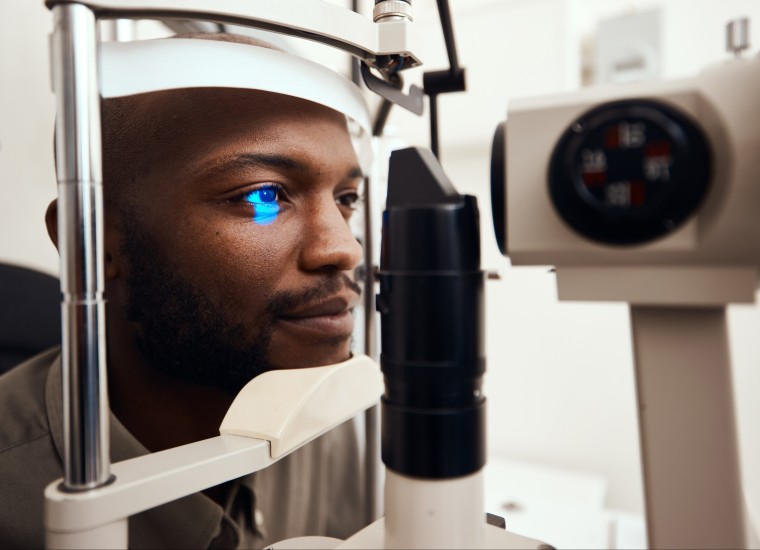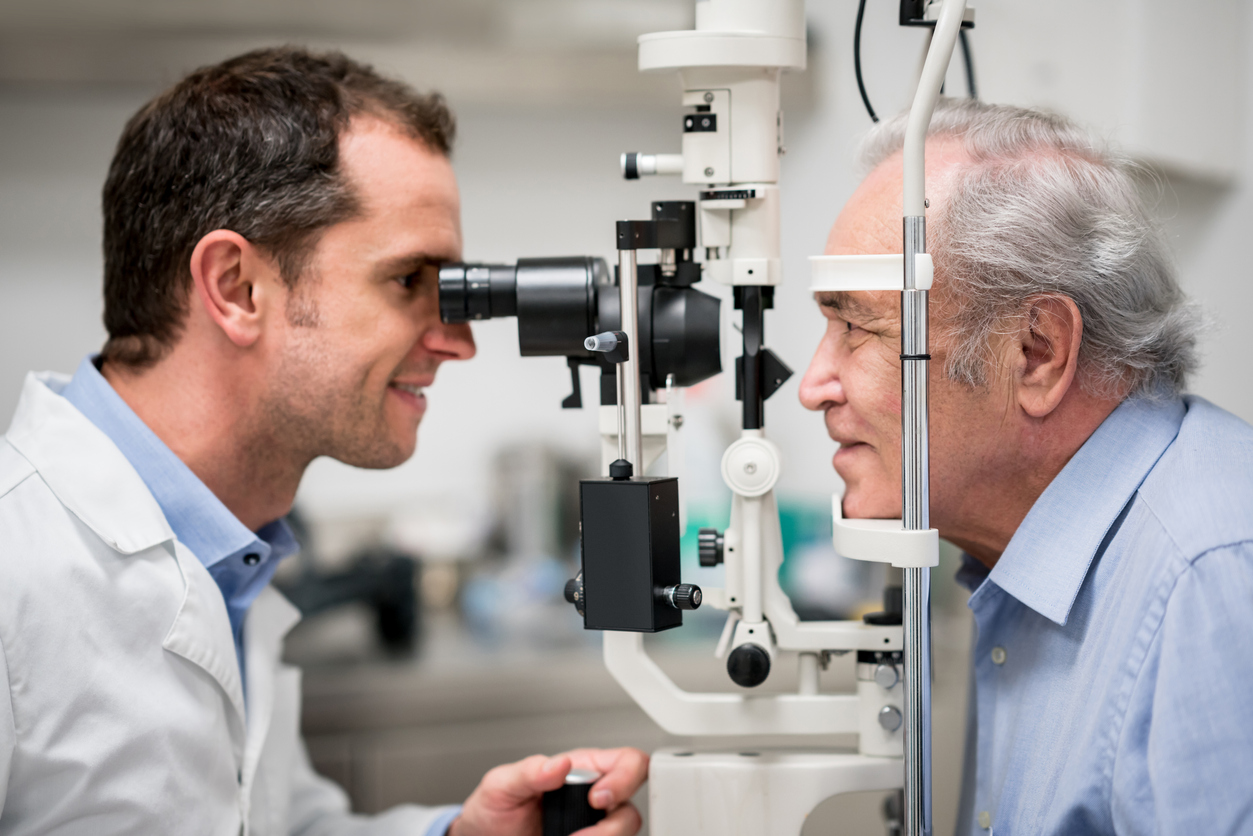Compassionate Eye Doctor: Specialist Care for Riverside Residents
Compassionate Eye Doctor: Specialist Care for Riverside Residents
Blog Article
The Comprehensive Eye Exam: What to Expect Throughout Your Visit to the Eye Physician
A visit to the eye medical professional for a thorough eye exam is greater than a regular check-up; it is an important step in securing your visual wellness. From the first conversation of your medical background to the precision of the aesthetic skill examination, each component of the exam serves a certain objective. What precisely occurs throughout the eye wellness assessment, and exactly how does it influence the prescription procedure? Recognizing these elements is essential for those that want to keep optimum sight. As we check out each element, the relevance of follow-up recommendations will also become clear.
Initial Assessment
The preliminary assessment throughout an eye test serves as a vital structure for recognizing a patient's aesthetic health needs. This stage sets the tone for the whole examination process, enabling the eye doctor to gather important details concerning the patient's clinical history, lifestyle, and particular vision issues. By diligently assessing any pre-existing problems, medicines, or previous surgeries, the eye care specialist can customize the examination to address private demands effectively.

In addition, the first assessment is a possibility for people to articulate any kind of questions or issues, fostering a collaborative connection with their medical care provider. This communication not just makes certain that the person feels notified and comfortable however likewise equips them to take part proactively in their eye wellness monitoring. Jointly, these discussions make it possible for the optometrist to create a personalized examination plan, guaranteeing optimal treatment and exact medical diagnosis.
Aesthetic Acuity Test
Kicking off the core parts of an eye evaluation, the visual acuity examination is created to examine the intensity and clarity of a patient's vision. This critical examination helps determine just how well a person can recognize letters or symbols at a standardized range, usually making use of a Snellen chart (Eye Doctor). The chart consists of rows of letters that decrease in size inside out, with the client placed at a customary distance of 20 feet
Throughout the test, the person is asked to cover one eye and read aloud the tiniest line of letters they can see plainly. This process is duplicated for the various other eye. The outcomes are taped as a portion, with 20/20 vision indicating normal visual acuity-- where the person can see at 20 feet what a person with typical vision can see at that range.
The aesthetic skill test also recognizes prospective refractive errors such as myopia, hyperopia, or astigmatism, which might require rehabilitative lenses. By developing a standard of visual performance, the test is an important analysis tool that helps the eye treatment professional in establishing a suitable treatment plan tailored to the person's special aesthetic demands.
Eye Wellness Assessment
Adhering to the aesthetic acuity examination, a thorough eye health and wellness evaluation is conducted to ensure the total well-being of the eyes. This important segment of the eye examination entails a complete evaluation of both the internal and outside frameworks of the eye.
With the use of ophthalmoscopy or fundus photography, the retina, optic nerve, and blood vessels are diligently assessed. In numerous cases, student dilation is performed to boost visibility of the inner eye structures, although this might result in momentary light level of sensitivity for the person.
Additionally, intraocular stress is gauged to screen for glaucoma risk. This is typically done using tonometry, which can discover raised stress degrees that may recommend potential damage to the optic nerve. Collectively, these analyses form a thorough evaluation to keep ocular health.
Refraction and Prescription
Refraction is a sophisticated treatment performed by eye treatment experts to identify the exact lens power required to remedy refractive errors such as nearsightedness, presbyopia, astigmatism, and hyperopia. The objective of this procedure is to evaluate how light bends as it passes via the eye, enabling the practitioner to establish whether restorative lenses are essential for boosted visual skill.
During the refraction procedure, the person is asked to browse a phoropter, a gadget that contains numerous lenses. The professional will systematically change these lenses and ask the individual to contrast clarity in between choices up until the most effective feasible vision is accomplished. This treatment is critical in crafting an exact prescription that helpful hints specifies the ideal lens power for glasses or contact lenses.
The prescription originated from this treatment not only optimizes vision but also works as a structure for selecting appropriate corrective glasses. It is important to ensure that prescriptions are consistently updated, as modifications in vision can happen over time, highlighting the relevance of routine eye exams. This thorough focus to information helps preserve clear, comfortable vision in life.
Follow-Up Suggestions

Throughout a follow-up see, the eye medical professional will certainly carry out a collection of examinations to examine visual acuity and check for any changes in vision that may require an upgrade to the prescription. In addition, the follow-up gives a possibility to go over any kind of pain or problems experienced with present eyewear. Changes can be made to make certain convenience and efficiency, whether with lens modification or structure modifications.
For people with continuous conditions such as glaucoma, diabetes-related eye concerns, or macular degeneration, even more regular follow-ups might be needed. These appointments are critical for managing and potentially slowing down the progression of eye disease. Following these suggestions can substantially add to preserving aesthetic health and preventing long-lasting complications.
Conclusion
The extensive eye examination is an important process for keeping aesthetic wellness, encompassing a comprehensive analysis of medical history and vision worries. Trick elements include the visual acuity test, which reviews eyesight clarity, and the eye health and wellness evaluation, which checks out the total problem of the eyes.
A see to the eye physician for a detailed eye exam is even more than a regular examination; it is an important action in protecting your visual health.Kicking off the core components of an eye examination, the visual acuity test is made to analyze the sharpness and clarity of a client's vision.Following the aesthetic acuity examination, a thorough eye health analysis is why not try here carried out to make certain the overall health of the eyes. These gos to allow the eye treatment specialist to check adjustments in vision, upgrade prescriptions, and assess the total health of the eyes. Key parts include the navigate to this site visual skill examination, which examines eyesight quality, and the eye wellness assessment, which takes a look at the total condition of the eyes.
Report this page